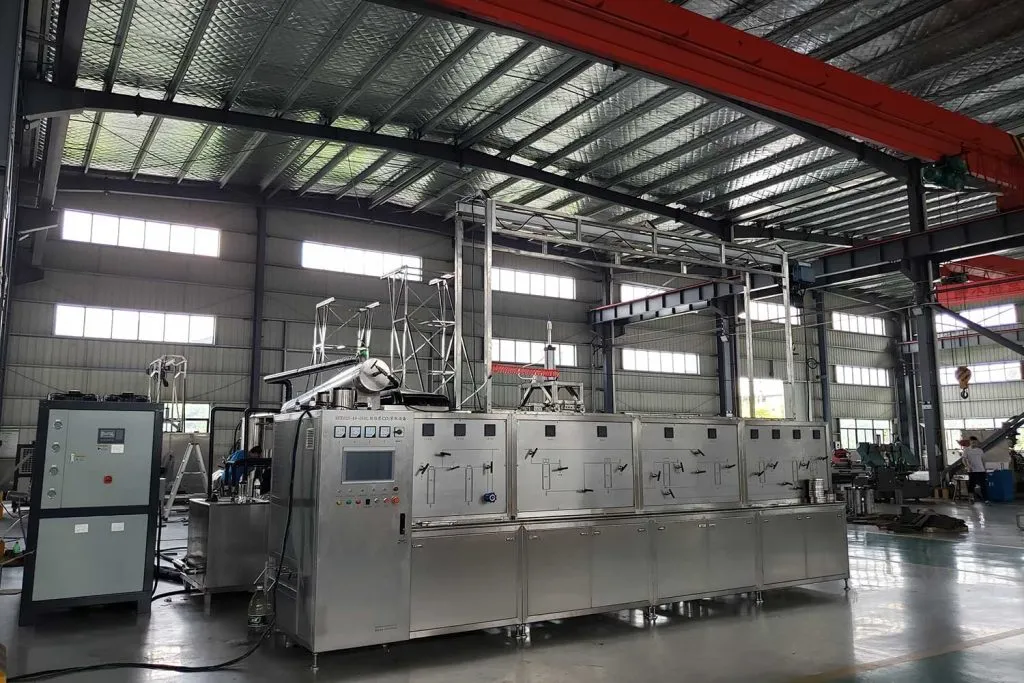Despite being the most expensive and complicated method of extracting cannabinoids and terpenes from cannabis biomass, supercritical CO2 extraction is quickly becoming an industry favorite. It is a highly customizable extraction method that allows processors to fine-tune the extracts they produce. Supercritical CO2 extraction requires following a step-by-step process to the letter.
Three basic steps are involved: decarboxylation, extraction, and winterization. Within each step there are additional steps that processors take to ensure a quality product. However, understanding just these three is enough to give you a general idea of how supercritical CO2 extraction works.
-
Step #1: Decarboxylation
CBD, THC, and other cannabinoids occur naturally in plant material as acids. In that form, they are not considered bioactive. The acids must be relieved of their carboxyl groups before they become active. This is accomplished through decarboxylation.
CedarStoneIndustry, a Houston company that designs and manufactures cannabis extraction and distillation equipment, says that decarboxylation is easily accomplished simply by introducing heat. An industrial scale processor would typically do so by putting large volumes of plant material in an oven. The heat simultaneously decarboxylates and prepares the material for extraction.
-
Step #2: Extraction
After coming out of the oven, dried and decarboxylated plant material is chopped and ground into fine pieces. It is then loaded into a pressurized tank where supercritical CO2 will be injected. Note that processors start with CO2 in its natural gaseous state and then cool and pressurize it to turn it into a liquid.
The liquid is injected into the tank containing cannabis biomass. As it begins to break down plant material, the temperature inside the tank increases. Heat helps to extract cannabinoids, terpenes, fats, waxes, and other substances. When all is said and done, the processor is left with a crude oil that slightly resembles a liquid-like peanut butter.
-
Step #3: Winterization
There are times when a processor decides to sell crude oil as-is. They sell it to companies that bottle it as a specialty product. However, most crude oil is further processed in order to get rid of unwanted chemical components. This additional processing begins with winterization.
Winterization gets its name from the fact that crude oil is put into a freezer for 8 to 10 hours. It doesn’t freeze hard, but it does thicken quite a bit. The crude is then forced through a series of filters to remove fats and waxes. The processor is left with a broad-spectrum oil that can be sold as-is or further distilled to isolate desired compounds.
-
Let the Distillation Begin
Using the strictest definition of terms, cannabis extraction is considered complete following the winterization process. Having said that, processors generally don’t stop there. They distill crude oil so that they can create different products for the retail market. Distillation is a centuries-old practice of separating the many constituents of a liquid by introducing heat and then collecting what evaporates. Incidentally, most liquors are distilled products.
Distillation works because the constituents of a given liquid have different boiling points. Constituents with lower boiling points evaporate first. They are captured while the temperature inside the distillation chamber is increased. Other constituents evaporate and are captured as they reach their boiling points. Using this process, workers in a processing lab can separate all the constituents in a batch of crude oil.
Distillation aside, supercritical CO2 extraction yields consistent and high-quality oils. It is expensive, requires a larger footprint, and can only be performed by highly trained individuals. But given the potential reward, more and more processors are turning to this extraction method over solvent extraction and steam distillation.














Leave a Reply